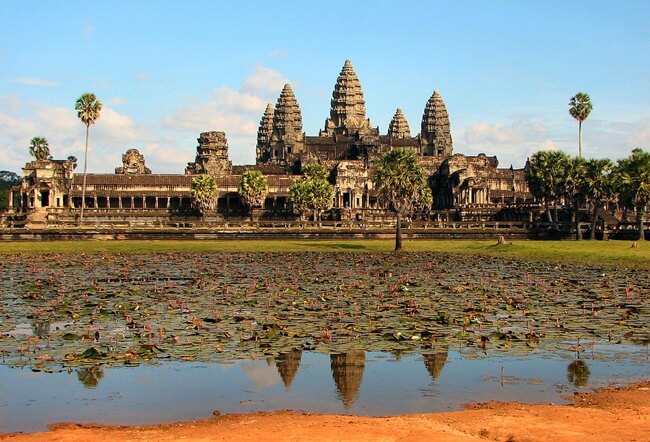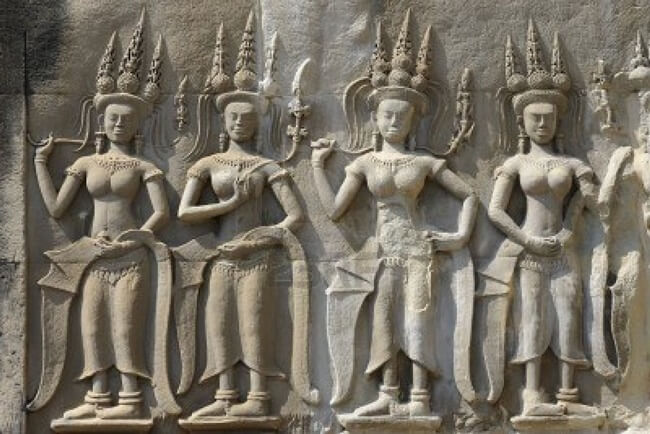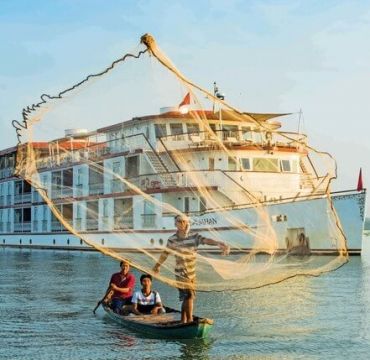Jungle Atlantis – Who Built Angkor... and Why?
by Ngoc Van Jun 22, 2023
Angkor is known as a capital city of the Khmer empire in Cambodia. Many of ruined temples of Angkor were restored and consist of the most important Khmer structures. Some secrets of the construction of the ancient Angkor will be uncovered to you in the following writing.
The lost city of Angkor was discovered by Portugese missionaries in the 1550s. They believe that the amazing buildings have close relations to the Romans, namely Trajan – a Roman emperor. Although the primitive agrarian society of Combodia is nearby, these preachers do not find any link between it and the astonishing structures.
It is known that Khmer empire is a strongly thriving civilisation in the early history, especially from the 800s to the 1400s. Hence, the relics of this flourished empire are a source of inspiration for scholars. They used many methods to find out answers for the rise as well as fall of architectural and engineering geniuses. The structures such as Angkor Wat, Angkor Thom, Preah Ko and a large number of relics scattered in the plains, hills and jungles of Cambodia and Thailand uncover a secret of religious and politica implulses. The epigraphy known as stone tablet-writing indicates politics and bureaucratic activities of Khmers, however, does not contain detailed information of unending land disputes or pride of victories. This is said in The Civilization of Angkor (2001) of Charles Higham who has a lot of studies of the Khmer empire in the centuries and dynasties. The Civilization of Angkor includes various information of Angkor as well as its construction. This British archaeologist who always pays attention to arrange chronology of the civilization from the carvings on stones shows that it should not fully trust these stone chronicles. Because like in many official records, the god-like qualities of their commissioners are noted and stood out while characters of the important human and pharaohs such as Jayaravarman VII, Surayavarman II and Rajendravarman I are changed and not exact.


Higham claims that Cambodia was not a slave state, although there are evidences for slaves in this country and thousands who worked hard for their lives such as quarying, shifting and assembling stones while a large amount of fish and rice could be found in the nearby Tonle Sap lake and its flood plain. In the 20th century, the French colonial tradition and scholars stated that the superior Indian civilization imposed Khmer aesthetic and technique on backward Cambodians. Nevertheless, the latest archaeology shows a contrary result that Cambodians made a clear plan of development from the prehistoric iron age.
The illustrations of relief carvings indicate that Khmer art is a formal representative of Hindu cosmology and a folk art. Although Angkor’s kings are described by a phrase of “frigid smile of power”, the temple walls point that the Khmer empire had a variety of activities for entertainment such as forest picnics, riverboat frolics, chess and dancing girls. In addition, people here also had their activities for their lives beside dragging stones and digging stupendous rectangular reservoirs.

Angkor which was lost in the 1430s still keeps its own secrets. Let's be a visitor in our Mekong River Cruises to discover the mysteries of Cambodia’s medieval metropolis.









![[Must Read] The Best Time for A Cruise on Mekong River [Must Read] The Best Time for A Cruise on Mekong River](https://topmekongcruises.com/thumb/crop/1188/90/90)


































